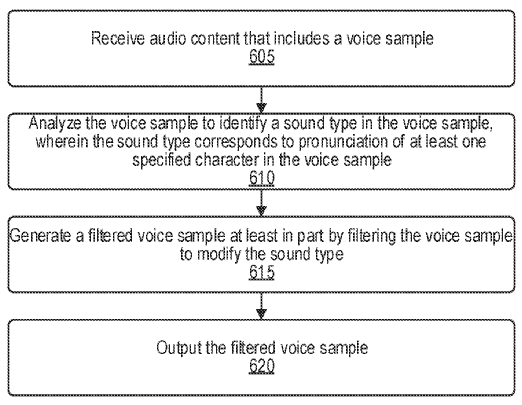Central to the patent is a device for audio processing designed to receive audio content containing a voice sample, usually involving a player uttering a word with multiple characters. The breakthrough lies in the system’s ability to analyse the voice sample, identify specific sound types related to character pronunciation, and generate a filtered voice sample.
What sets Sony Interactive Entertainment’s technology apart is the use of a personalised filter, fine-tuned to the player’s voice based on additional voice samples. The patent recognises that different voices may exhibit varying audio characteristics, leading to challenges such as sibilance (hissing sounds), unclear pronunciations, or other undesirable traits.
The technology steps in to address these issues by pinpointing problematic sound types and applying a tailored solution to enhance the overall quality of the voice sample. The patent introduces the concept of personalised filters, emphasising the use of machine learning models trained on additional voice samples.
This ensures that the filter is specifically tuned to the individual characteristics of the player’s voice. The technology is not limited to addressing sibilance but extends to various voice characteristics. It can identify voice types related to gender, age, accent, and other factors, allowing for a comprehensive approach to audio enhancement.
The voice type may encompass attributes such as age, accent, dialect, or ethnic background, with the patent proposing that the technology can adapt dynamically to factors like microphone positioning during recording, thereby enhancing the precision of the filtered output.
The sound type could also correspond to speech dysfluency, and the filtering process corrects this issue in the voice sample. The filtering process involves using specific filters like a de-esser or a compressor targeting a specified frequency range related to the identified sound type.
While the patent’s applications are broad, its implications for gaming are particularly noteworthy. With Sony Interactive Entertainment being a key player in the video game industry, the technology could significantly elevate the gaming experience. Clearer and more refined voice communication within multiplayer video games, for instance, could enhance teamwork and overall immersion.
Beyond the gaming realm, this innovation has the potential to impact various industries. In communication platforms, video conferencing, and virtual assistants, the technology could ensure clearer and more intelligible voice interactions. Users with diverse accents or speech patterns may benefit from a more personalized audio experience, fostering inclusivity.
Although the patent offers a comprehensive blueprint for the technology, its actual implementation remains to be witnessed; nevertheless, Sony Interactive Entertainment has a history of translating patents into groundbreaking products.
What do you think about this? Do tell us your opinions in the comments below!
Similar Reads: Sony Working On AI Assistance For Struggling Players In Games














